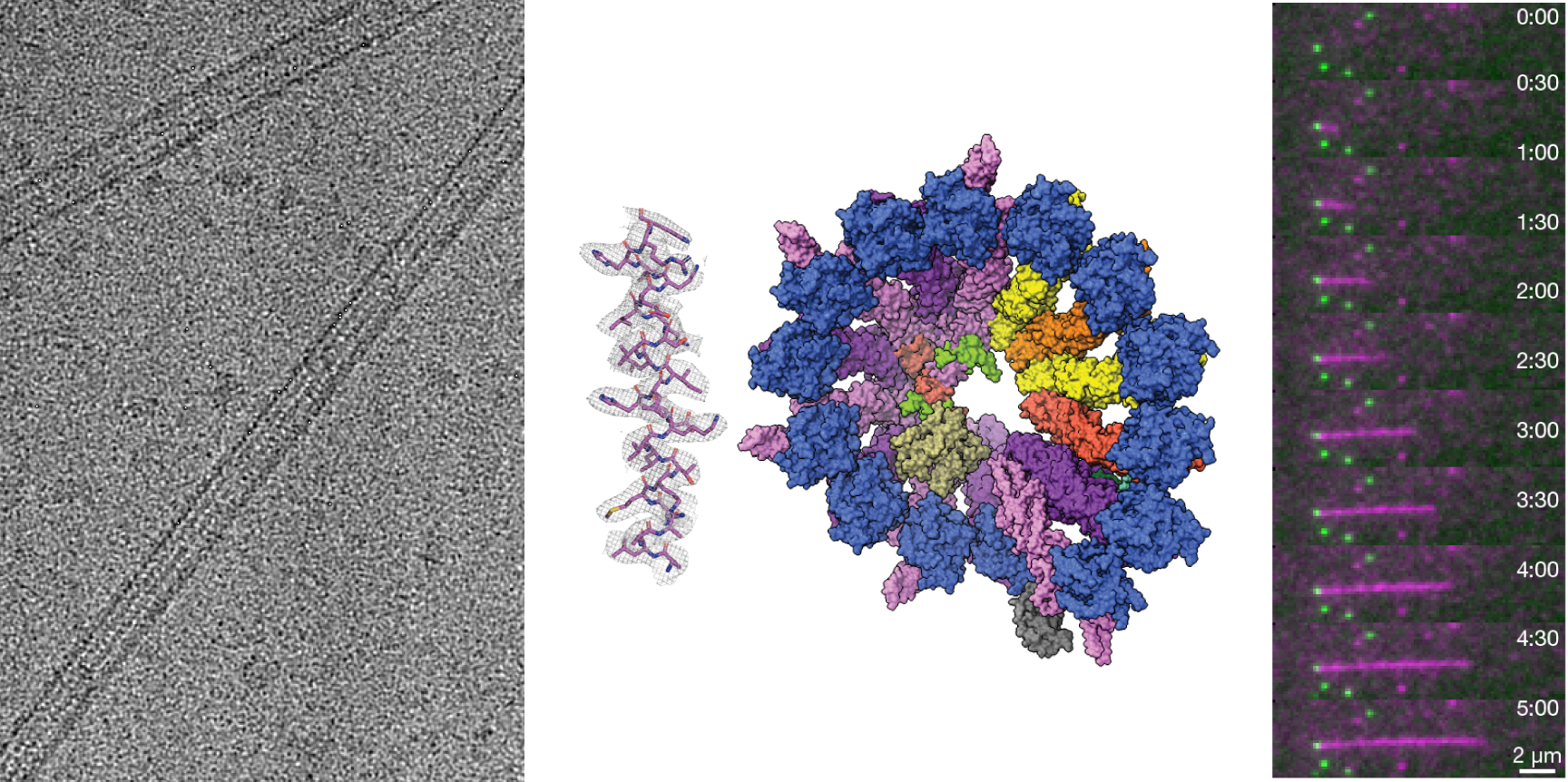Research

We are fundamentally interested in understanding how complex cellular morphology emerges from nanoscale biomolecular interactions. To address this question, we study the biophysical mechanisms that govern the formation of the microtubule cytoskeleton.
One current focus of the lab is the gamma-Tubulin Ring Complex (gamma-TuRC), which nucleates microtubule assembly and is essential for proper microtubule network organization in cells. Our recent high-resolution structures and biochemical reconstitution efforts have shed some light on the biology of this unusually large and complicated protein complex, but many questions about the structure and regulation of the gamma-TuRC are still unexplored.
The lab uses an interdisciplinary approach combining several biophysical methods including structural biology, biochemistry, single molecule microscopy, and cell biology.
Microtubules are direct targets of some of the most widely-used chemotherapeutic small molecules, and point mutations in the proteins making up the microtubule cytoskeleton are linked to neurodevelopmental disorders including microcephaly, epilepsy, and severe learning disabilities. Our hope is that understanding how microtubule networks form and function will lead to better treatments for these challenging diseases.
Check out our Publications for more details.